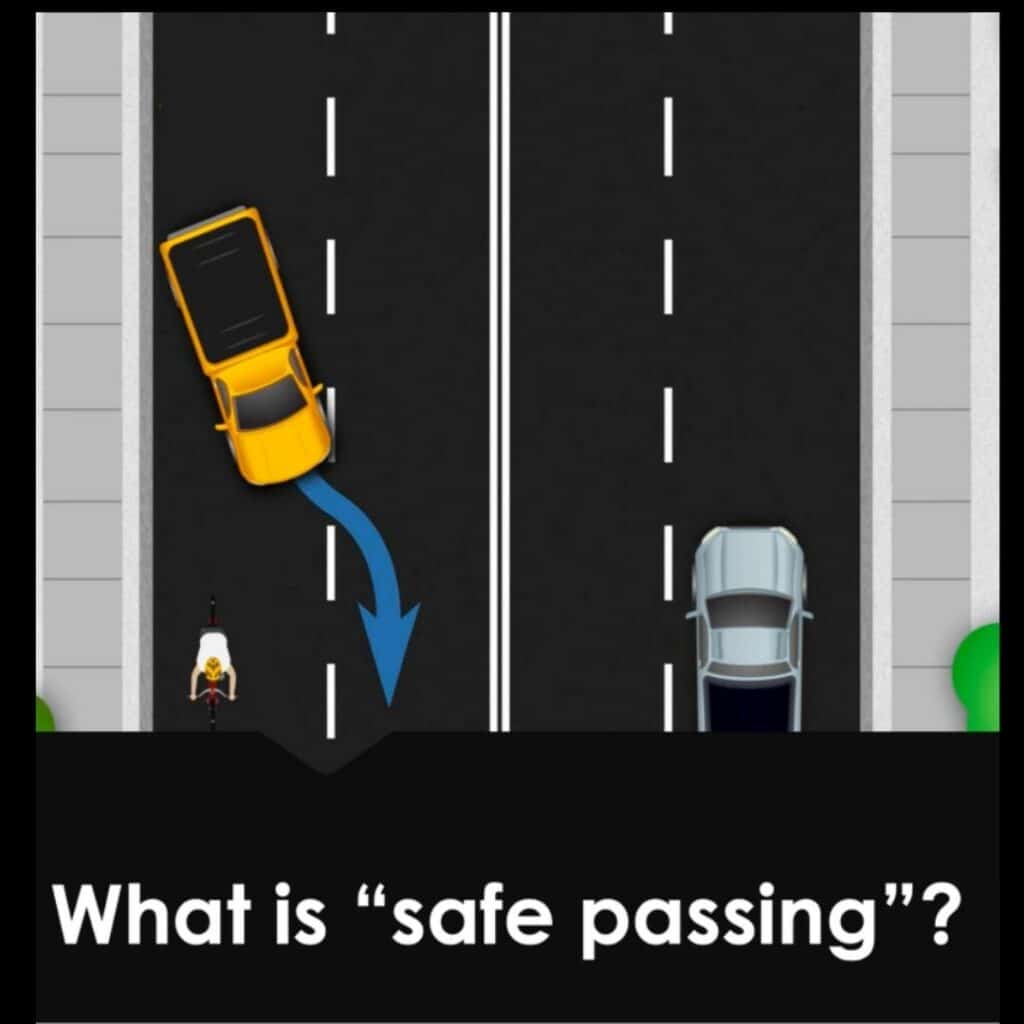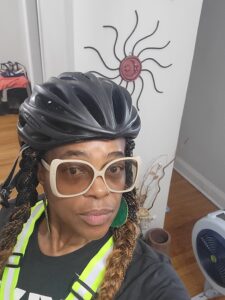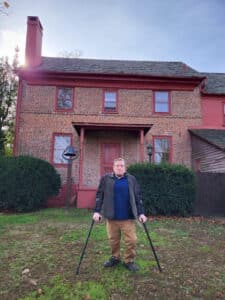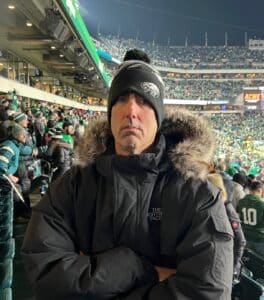What is the NJ Safe Passing Law (NJSPL)?
Like similar Move Over laws, the NJ Safe Passing law provides protection for people on the road by providing clear rules of the road for all motorists about when and how to pass people sharing the road on foot, on bicycles, on scooters, wheelchairs or in other legally permitted ways to travel other than a motor vehicle.
Why is it needed?
We are experiencing a crisis on our roads. 2021 was the deadliest year for NJ bicyclists & pedestrians in 30 years with a 23% increase in pedestrian fatalities and a 44% increase in bicyclist fatalities. The NJ Safe Passing Law aims to prevent near misses, injuries, and deaths that occur when motorists pass vulnerable road users unsafely.

Drivers in New Jersey are now required to approach and pass vulnerable road users with “due caution.”
“Due caution” means both slowing down and giving the other user plenty of space when passing:
- Drivers must follow all current no-passing, no speeding laws AND move over a lane if there’s one to move into.
- On a single-lane road, drivers must allow at least a 4-foot safety zone when they pass.
- If 4 feet is not possible on a section of road, drivers must slow to 25mph and be prepared to stop until they can pass safely without endangering those sharing the road.
- Slow down, approach with due caution, move over a lane if possible.
- Yield until it’s safe to pass every person in the group with at least 4 feet of space.
- Only move back into the lane when safely beyond the leader of the group. Do not cut off the group to make a turn in front of them.
By law, cyclists can legally ride two-abreast as long as they stay as far to the right as “practicable”, providing they do not “impede traffic.”
- Slow down, approach with due caution, move over a lane if possible.
- Yield until it’s safe to pass every person in the group with at least 4 feet of space.
- Only move back into the lane when safely beyond the leader of the group. Do not cut off the group to make a turn in front of them.
By law, cyclists can legally ride two-abreast as long as they stay as far to the right as “practicable”, providing they do not “impede traffic.”
- Slow down, approach with due caution, move over a lane if possible.
- Yield until it’s safe to pass every person in the group with at least 4 feet of space.
- Only move back into the lane when safely beyond the leader of the group. Do not cut off the group to make a turn in front of them.
- While separated infrastructure (like sidewalks) are safer than legal protection alone, not all roads have sidewalks, and some sidewalks may be in poor condition and unsafe to jog on.
- Drivers should approach vulnerable users of all kinds with due caution and pass safely, regardless of whether they ‘should’ be on the road or not.
The NJ Safe Passing Law does not replace any existing safe passing laws. The Safe Passing Law asks drivers to use “due caution” from the time they spot a vulnerable road user and allow themselves time to make the best judgment about when and how to pass safely.
Oscar Zanoni was a beloved, 44-year-old Metuchen resident. Due to a childhood illness, he was unable to operate a car and was well known for riding his electric bicycle everywhere. Tragically, in 2020 he was fatally struck by a tractor-trailer while riding his e-bike on Route 27 near Vineyard Road in Edison, NJ. Inspired by Oscar’s story, the bill was introduced by three Democratic lawmakers representing NJ’s 18th legislative district, which includes Metuchen and Edison.
Oscar’s crash was preventable, and his story is representative of many people, often overlooked in our society, who are unable to or can’t afford to drive. It is essential that NJ creates safe conditions and protects all users of its roadways.
No. The Safe Passing Law provides additional guidance to fill gaps left by laws already in place. While similar laws protect law enforcement officers, workers, cars and trucks, and even people riding horses, there was no law previously protecting other vulnerable road users. Users like Oscar (see previous question).
The Slow Down, Move Over Law requires motorists approaching authorized vehicles with emergency lights flashing to slow down or move one lane over from the incident. The law protects essential workers like emergency responders, highway crews, tow truck operators, and others when working along the road.
The Stop and Stay Stopped Law requires drivers to stop when pedestrians are crossing a marked intersection and yield to pedestrians crossing at unmarked intersections. The law “reinforces the importance of pedestrians using crosswalks, their safety zone, and for motorists to recognize that when approaching crosswalks, they must be alert for pedestrians.”
While the pandemic led to a surge in car and truck traffic as people looked for more isolated ways to travel – along with increases in speeding and more dashboard distractions – dangerous road conditions for vulnerable road users has been the norm for far too long.
COVID also highlighted the importance of having more choices for how we move around our cities and towns. There are now more people than ever using the roads on foot or on wheels, by necessity or by choice.
Most projections show the numbers increasing. For many, new travel and recreational habits picked up during the pandemic have become permanent. Many people will continue to walk and roll on the streets for exercise, recreation and to get to work, school and shop.
In addition, new trends show increasing demand for living in walkable communities and use of new micromobility technologies is also on the rise. Sales of e-bicycles and scooters are booming. Bike and scooter share companies are investing. Local businesses increasingly see the benefit of encouraging people to shop or dine by walking or riding to them.
Globally, there is a trend towards more liveable, healthy, sustainable communities that offer more options for how we travel. We don’t see it slowing down anytime soon!
It is up to each local police department to decide how they want to enforce the Safe Passing Law. It is expected that the first step will be direct education (warnings) given to drivers who violate the law. The primary purpose of the law is education, awareness, and a cultural shift around sharing space on the road, rather than a means to punish negligent motorists.
NJ Safe Passing Law joins the Move Over Law and the Crosswalk Stop Law to give police officers a focused citation for drivers who pass vulnerable road users unsafely. Police can use Codaxus C3FT devices to measure passing distances and will write citations of $500 and two motor vehicle points if bodily harm is caused, and $100 if no injury occurs.
Additionally, other road users can use personal video as evidence in court.














































































